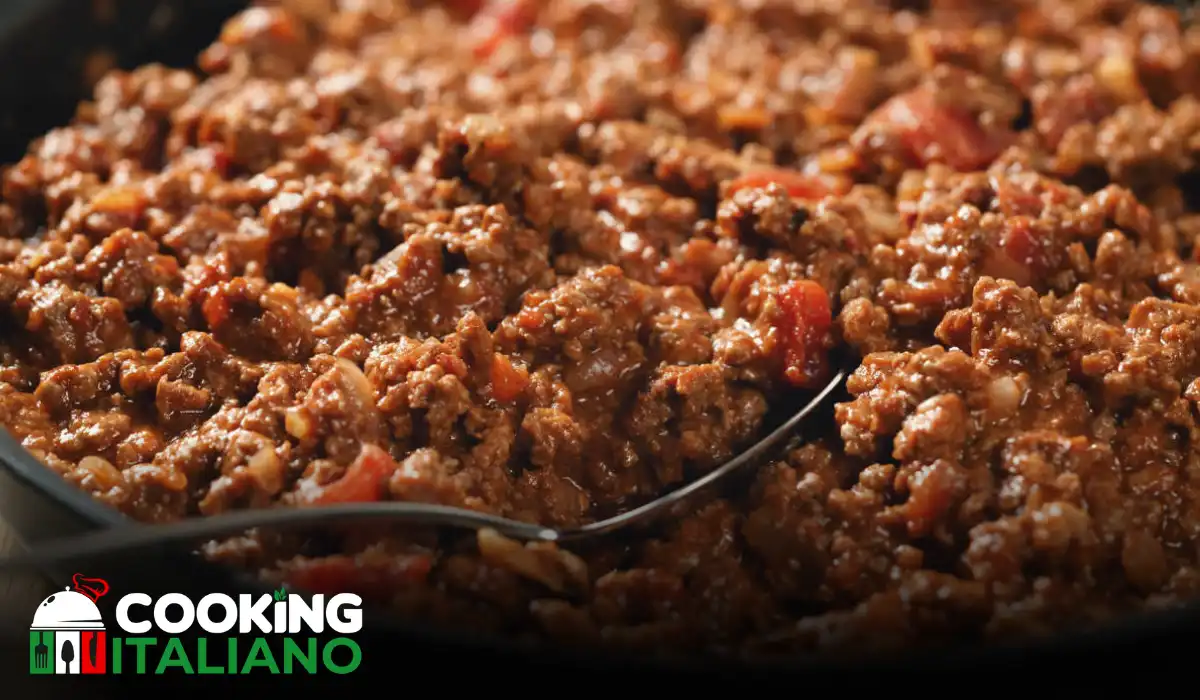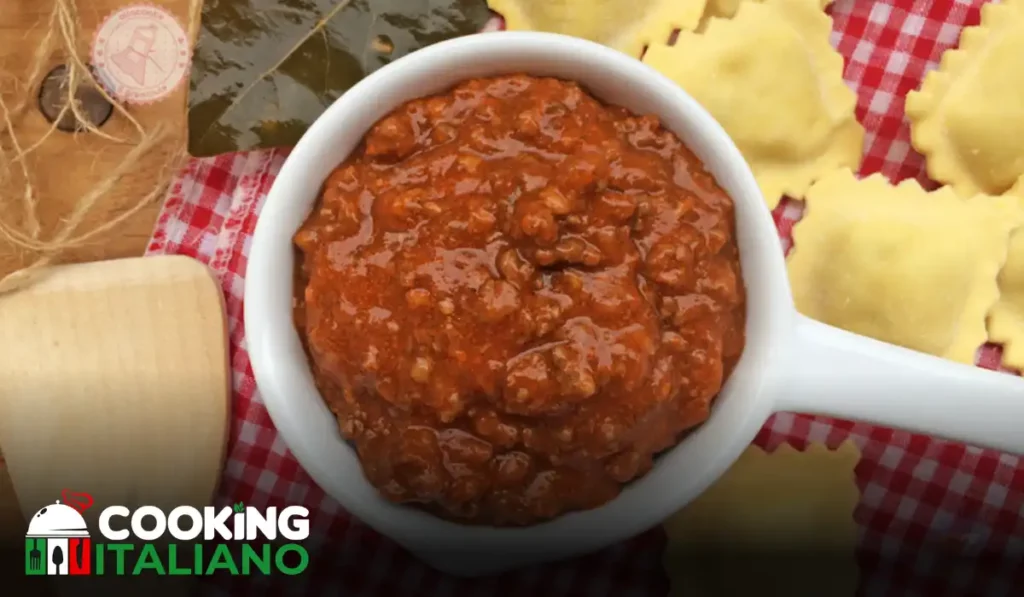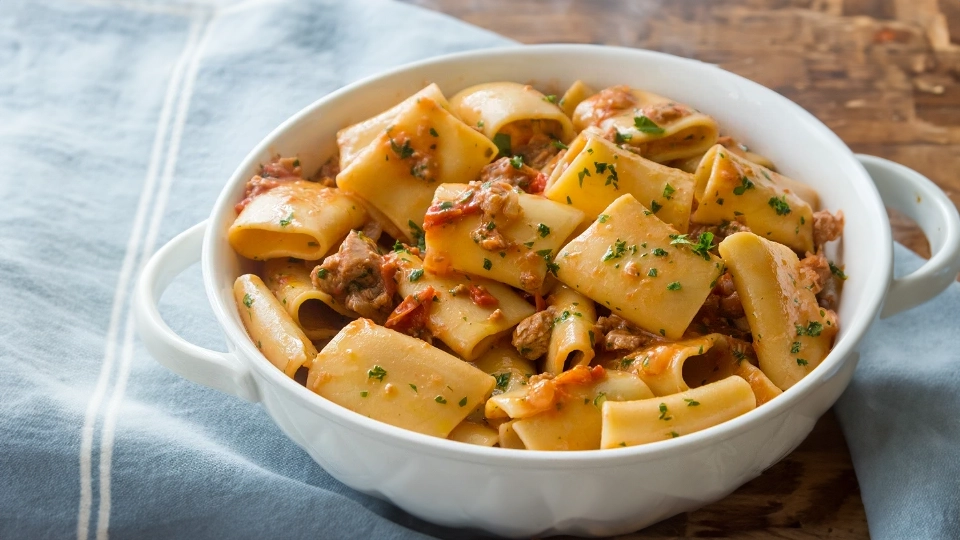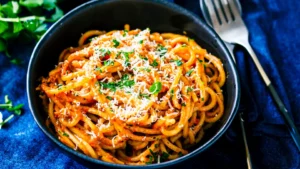When it comes to classic Italian comfort food, few dishes are as heartwarming and versatile as Ragu’ di Carne, or traditional meat sauce. Picture a simmering pot bursting with savory aromas of beef, tomatoes, and a rich blend of herbs, ready to crown a pile of al dente pasta or nestle into a warm polenta hug. This staple of northern Italian cuisine is not only a delightful expression of flavors but also a tradition that brings families together around a table.

In this detailed guide, we’ll explore how to master the art of making Ragu’ di Carne at home. You don’t need to be a seasoned chef to create this masterpiece; all you need is a little patience and a lot of love for authentic Italian flavors.
Before you roll up your sleeves and get into the culinary fray, it’s essential to understand what’s on the menu. Ragu’ di Carne, unlike its quicker counterpart Bolognese, is a slow-cooked meat sauce that lets the flavors develop over time. It typically includes a mix of ground meats like beef, veal, and pork, which are sautéed with aromatic vegetables, tomatoes, and a splash of wine. The long cooking time ensures that the meat is tender and the sauce thick and deeply flavorful.
Meat Sauce Italian-Style (Ragu’ di Carne)

Ingredients
To create an unforgettable Ragu’ di Carne, you’ll need a selection of high-quality ingredients. Here’s what you’ll need to gather before you start cooking:
- 1 medium yellow onion, finely chopped
- 2 garlic cloves, minced
- 2 carrots, finely chopped
- 2 celery stalks, finely chopped
- 4 tablespoons extra-virgin olive oil
- 1 pound (450 grams) ground beef
- 1 pound (450 grams) ground pork
- 1 cup (240 ml) dry red wine
- 1 can (28 ounces/790 grams) crushed tomatoes
- 1 cup (240 ml) beef or chicken broth
- Salt and freshly ground black pepper
- 1 cup (240 ml) whole milk
- Freshly grated nutmeg
- 1/4 teaspoon sugar
- Fresh basil leaves, torn
- 1 pound (450 grams) pasta or polenta, for serving
- Freshly grated Parmigiano-Reggiano cheese, for serving
Instructions
The secret to an exceptional Ragu’ di Carne is in the slow and steady cooking process. This allows the flavors of the meat, vegetables, and seasonings to meld together harmoniously. Follow these steps to achieve that perfect, rich sauce:
- Start by heating the olive oil in a large, heavy-bottomed pot over medium heat. Add the onions and garlic, and cook until translucent. Then, add the carrots and celery. This trio, known as a soffritto, forms the aromatic base of the sauce and imparts a deep flavor profile.
- Increase the heat to medium-high and add the ground beef and pork to the pot. Cook until the meat is browned, breaking it up with a spoon as it cooks. Browning is crucial as it caramelizes the proteins in the meat, adding another layer of flavor to the dish.
- Pour in the red wine and stir, scraping up any browned bits from the bottom of the pot. The wine adds acidity and sweetness, which will balance the richness of the sauce.
- Add the crushed tomatoes and broth to the pot. Season with salt and pepper. Lower the heat to a gentle simmer, cover with a lid slightly ajar, and cook for at least 3 hours. The longer it simmers, the better it gets, so feel free to cook it for longer if you have the time.
- About 30 minutes before the sauce is done, stir in the milk. This may seem like an unusual addition, but the milk’s lactic acid tenderizes the meat and rounds out the flavors beautifully.
- Finally, season the sauce with freshly grated nutmeg, sugar (if needed to balance the acidity of the tomatoes), and more salt and pepper if desired. Just before serving, stir in the fresh basil for a burst of aromatic freshness.
Serve your Ragu’ over hot buttered pasta or creamy polenta, and don’t forget to dust it with a generous amount of Parmigiano-Reggiano cheese.

DID YOU MAKE THIS RECIPE?
Tag @amcookingitaliano on Instagram and hashtag it #amcookingitaliano!
Tips for Customizing Your Ragu’
While there’s something sacred about traditional recipes, cooking is an art, not a science. Here are a few ways you can customize your Ragu’ di Carne to suit your taste:
- Variety of meats: Experiment with different ratios of ground beef, pork, and veal, or try substituting one of the meats with ground sausage for added flavor.
- Vegetables: Add a bit of tomato paste for a deeper color and flavor. Some recipes also include a small amount of finely minced pancetta for a smoky note.
- Herbs: While basil is the classic addition, you can also use a bouquet garni of thyme, rosemary, and parsley, or a sprinkle of dried oregano.
- Red wine: Rather than using the traditional dry red wine, you can also incorporate a splash of Marsala for a sweeter, more intense flavor.
Remember, cooking is a personal adventure, and the joy of making a dish your own is just as satisfying as enjoying the final product.
How to Store and Reheat Ragu’
Ragu’ di Carne is a perfect make-ahead dish. It’s even better the next day after the flavors have had a chance to mingle. Store your sauce in an airtight container in the refrigerator for up to four days, or freeze it for up to three months. To reheat, simply warm it gently on the stovetop, adding a bit of water or broth if necessary to loosen it up.

When it comes to a hearty and wholesome meal, Ragu’ di Carne ticks all the boxes. Try your hand at this time-honored Italian recipe, and enjoy the pleasure of creating a sophisticated, yet approachable, sauce that’s sure to become a family favorite.
Conclusion
A good Ragu’ di Carne speaks to the soul, embodying the rustic simplicity and robust flavors that Italian cuisine is renowned for. With a little patience and a handful of ingredients, you can enjoy this versatile sauce in a multitude of ways. From pasta to polenta, or even as a topping for homemade pizza, the possibilities are endless.
Unlock the essence of authentic Italian cooking and savor the joy of homemade comfort with this timeless recipe. Whether you share it around the family dinner table or enjoy it solo, Ragu’ di Carne celebrates the slow life and the rich flavors that come with it.
FAQs
What is the difference between Ragu’ di Carne and Bolognese sauce?
While the terms are often used interchangeably, there is a distinction between the two. Ragu’ di Carne is a broader term denoting any meat sauce in Italian cuisine. Bolognese, or Ragu’ alla Bolognese, is a specific type of meat sauce that originates from the Bologna region and typically includes a mixture of meats, tomatoes, wine, and milk or cream. It’s also usually served with tagliatelle, a type of pasta native to the region.
Can I make Ragu’ di Carne with alternative meats for dietary reasons?
Absolutely! While the traditional combination of beef, veal, and pork is highly recommended for the best flavor, you can customize your Ragu’ di Carne to accommodate dietary requirements. For a lighter version, you can use all-lean ground turkey. For a richer taste, try using a combination of beef and lamb. Make sure to adjust your seasonings accordingly to account for the different meat flavors.
Is there a vegan or vegetarian alternative to Ragu’ di Carne?
For those following a plant-based diet, a rich and satisfying vegan Ragu’ can be achieved by using meat substitutes like textured vegetable protein (TVP), lentils, mushrooms, or a combination of these. Cook these alternatives with the same aromatic vegetables and flavorings, and you’ll have a sauce that’s sure to please vegetarians and meat-lovers alike. Be sure to use a robust base like crushed tomatoes and a hearty vegetable broth to provide depth of flavor.













